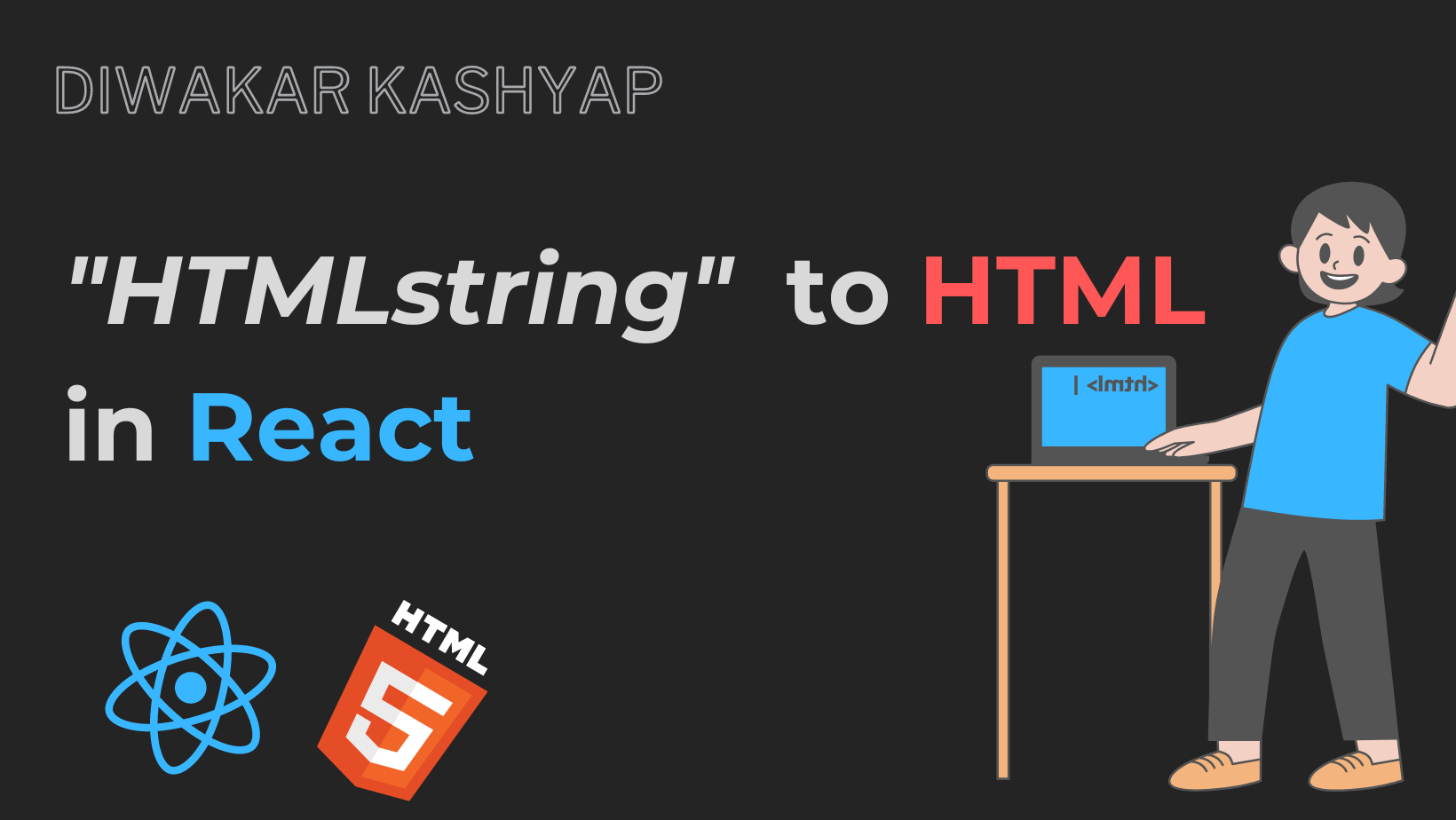convert HTMLstring to HTML in React (all advance methods)
 Diwakar
Diwakar
If you need an advanced way to convert an HTML string to actual rendered content in React, you might be looking at incorporating richer features, interactions, or handling components. Below are a few approaches that offer advanced rendering:
- Custom Component Parsing
Instead of simply rendering the HTML string, you can parse the HTML and convert specific elements to React components. This is helpful if you want certain parts of your HTML to be more interactive or behave differently than standard HTML.
Libraries like react-html-parser make this possible.
npm install react-html-parser
Here's how to use it:
import ReactHtmlParser, { processNodes, convertNodeToElement, htmlparser2 } from 'react-html-parser';
function HtmlContent({ htmlString }) {
const transform = (node, index) => {
if (node.type === 'tag' && node.name === 'button') {
return <button key={index}>{node.children[0].data}</button>;
}
};
return <div>{ReactHtmlParser(htmlString, { transform })}</div>;
}
2.Portals
If you're looking to render the HTML string in a different part of the DOM (outside your React app's root, for example), then React Portals are the way to go. This is handy for modals or other UI elements that need to break out of their container.
import ReactDOM from 'react-dom';
function Modal({ htmlString }) {
return ReactDOM.createPortal(
<div dangerouslySetInnerHTML={{ __html: htmlString }} />,
document.getElementById('modal-root')
);
}
3.Custom Hooks
If you're working with the HTML string regularly and applying various transformations or sanitizations, it might be worth creating a custom hook.
import DOMPurify from "dompurify";
function useSanitizedHtml(htmlString) {
return DOMPurify.sanitize(htmlString);
}
function HtmlContent({ htmlString }) {
const sanitizedHtml = useSanitizedHtml(htmlString);
return <div dangerouslySetInnerHTML={{ __html: sanitizedHtml }} />;
}
4.CSS-in-JS Solutions with Scoped Styles
If the HTML content has associated styles and you want to scope them to avoid conflicts, you can use libraries like styled-components or emotion to apply styles only to that chunk of content.
5.Shadow DOM
You can render the content inside a shadow root which provides encapsulation for JavaScript, CSS, and templates. This can be done using React refs and direct DOM manipulation but is more involved.
The method you select should align with your project requirements. Always remember the security risks associated with rendering raw HTML and sanitize the content appropriately.
Thank you for reading. I encourage you to follow me on Twitter where I regularly share content about JavaScript and React, as well as contribute to open-source projects. I am currently seeking a remote job or internship.
Twitter: https://twitter.com/Diwakar_766
GitHub: https://github.com/DIWAKARKASHYAP
Portfolio: https://diwakar-portfolio.vercel.app/
Subscribe to my newsletter
Read articles from Diwakar directly inside your inbox. Subscribe to the newsletter, and don't miss out.
Written by

Diwakar
Diwakar
As a passionate developer, I thrive on acquiring new knowledge. My journey began with web development, and I am now actively engaged in open source contributions, aiding individuals and businesses.